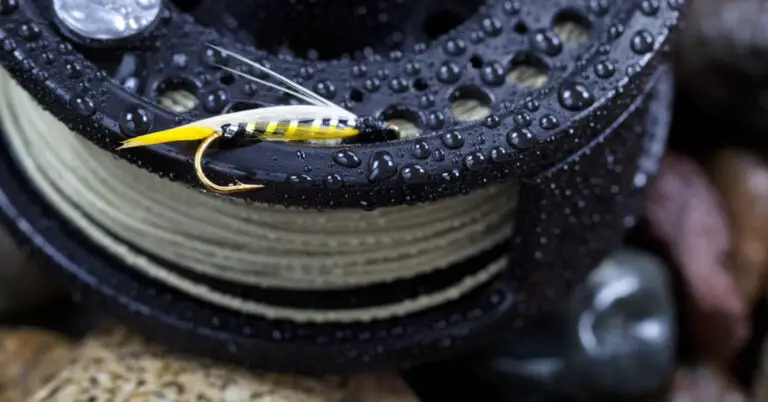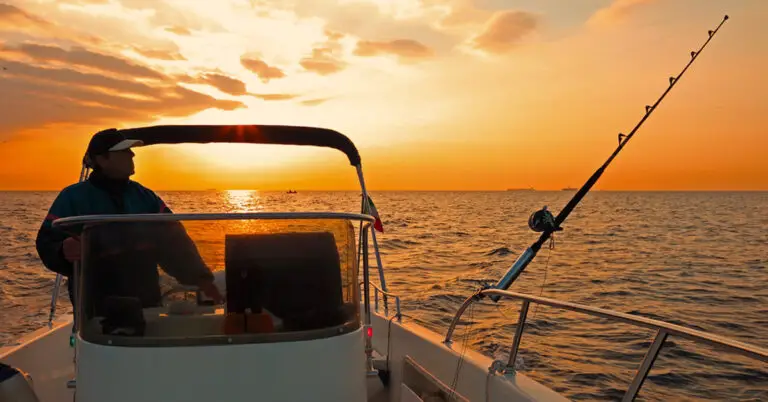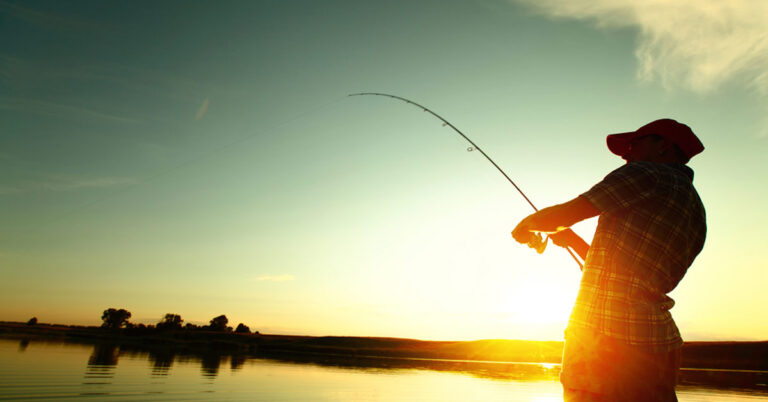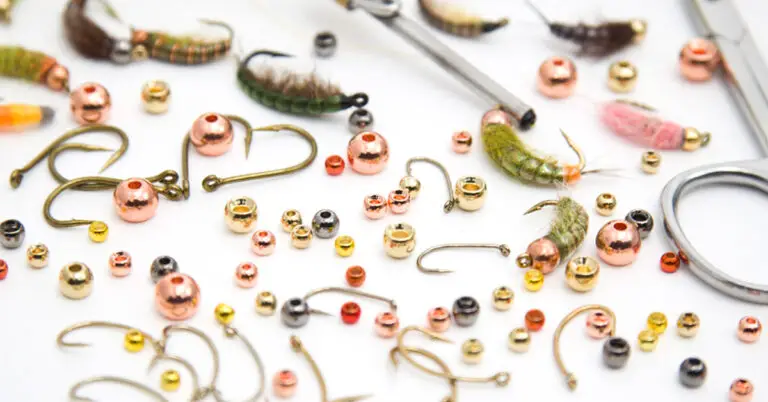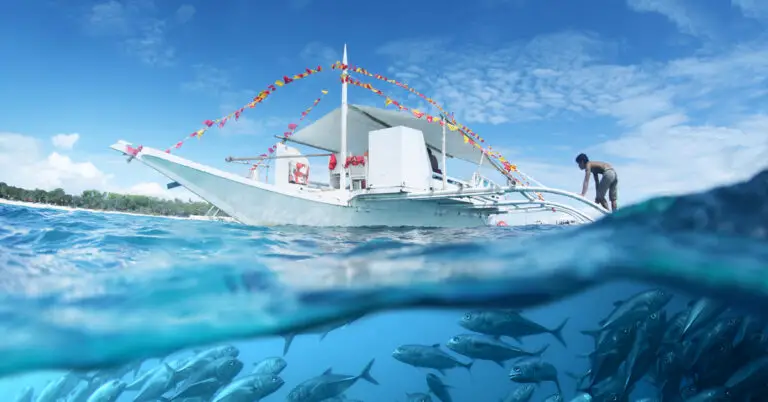Fishing Weights: What Are They Made Of and How Do They Impact the Environment?
Delving into the heart of the angler’s toolkit, one often overlooked component silently anchors the fascinating world of fishing. This seemingly insignificant piece grounds the line and carries an untold story about its composition and its silent footprints on our environment.
Fishing weights are typically made from lead, steel, or tungsten. Lead weights are problematic as they can poison wildlife if ingested. Alternatives like steel or tungsten are safer but more expensive. Thus their environmental impact is less, but usage is less widespread.
Exploring this topic reveals unexpected dimensions, leading us to question the unseen consequences of our cherished pastimes.
The Composition of Fishing Weights: An Overview
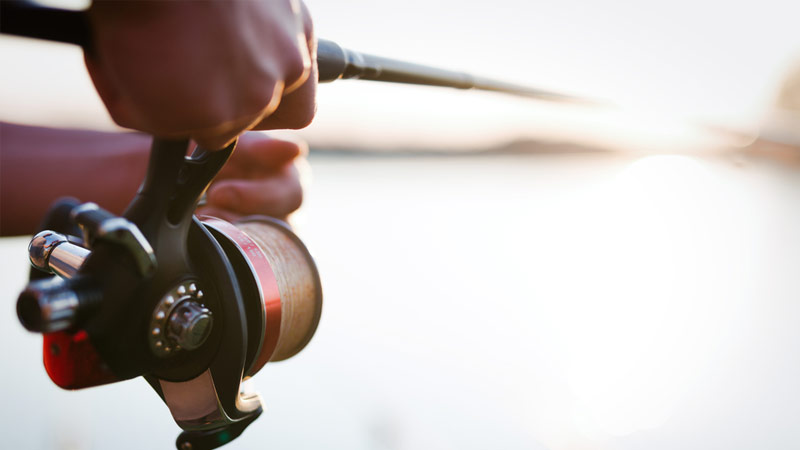
The composition of fishing weights, also known as sinkers, has been a subject of much discussion and evolution over the years. Traditionally, these small, heavy objects that allow an angler’s bait or lure to sink rapidly in the water have been predominantly made of lead.
The choice of lead was natural, given its abundance, ease of molding, and significant density, which makes for efficient weights even in small sizes. However, as understanding of materials and their environmental implications has grown, other materials have come into play.
Today, along with lead, fishing weights can be made from various materials, each with unique properties and impacts. These include but are not limited to, steel, tungsten, and even natural substances like stone or clay.
- Lead Weights: These are the most common type of fishing weights, favored for their cost-effectiveness and ease of use. They are, however, being phased out in many places due to environmental concerns.
- Steel Weights: As a readily available and relatively inexpensive material, steel is increasingly being used as an alternative to lead. It is less dense than lead, meaning more material is needed for the same weight.
- Tungsten Weights: Tungsten is denser than lead and environmentally safer. It is, however, more expensive, which has limited its widespread adoption.
- Natural Weights: Some anglers use weights made from stones, clay, or other natural materials. These are eco-friendly options, but they may not provide the same level of performance as their metal counterparts.
Lead Weights: A Traditional Choice
Lead has been the material of choice for fishing weights for centuries, a tradition rooted in the material’s unique properties. It’s abundant, inexpensive, and easy to mold into any shape or size, offering great versatility to anglers.
The density of lead allows for compact yet heavy weights, allowing fishermen to easily control the depth and distance of their cast. These attributes and the corrosion resistance have made lead an attractive choice for fishing weights. However, the use of lead weights is not without its drawbacks. Most notably, lead is a toxic material that poses significant health risks to humans and wildlife alike.
The extent of this issue became evident as reports of wildlife, particularly waterfowl, succumbing to lead poisoning after accidentally ingesting lead fishing weights started to emerge. Despite their effectiveness and affordability, these environmental and health concerns have led to a reevaluation of the use of lead in fishing weights in recent years.
Environmental Impact of Lead Fishing Weights

Despite their utility in fishing, lead weights have raised significant environmental concerns. Lead is a toxic heavy metal that can contaminate water bodies and harm aquatic ecosystems. When discarded or lost during fishing, these weights can degrade over time, releasing lead into the surrounding environment.
This affects the water quality and can have dire effects on the health of wildlife, particularly birds and aquatic species, which often mistake small lead weights for food or grit.
- Water Contamination: Over time, lead weights abandoned in water bodies can corrode and leach lead into the water, contributing to contamination. This risks all aquatic life and can indirectly affect humans by consuming contaminated seafood.
- Wildlife Poisoning: Birds and aquatic species often mistake small lead weights for food or grit necessary for digestion. Lead can cause severe health issues upon ingestion, including neurological damage and death.
- Bioaccumulation: Lead can accumulate in the bodies of aquatic organisms, leading to long-term health issues and potentially affecting the entire food chain, including predators and humans who consume these species.
- Habitat Destruction: Lead in aquatic habitats can alter some species’ behavior and reproductive patterns, potentially leading to decreases in population and even local extinctions.
Steel and Tungsten Weights: An Eco-Friendly Alternative?
In response to the environmental issues associated with lead fishing weights, alternatives such as steel and tungsten have gained popularity. Both materials are significantly less toxic than lead, reducing the risk of poisoning wildlife and contaminating water bodies.
Being relatively abundant and affordable, steel is a popular choice for those seeking to lessen their environmental impact. While it’s not as dense as lead, requiring larger sizes for the same weight, its magnetic properties can be leveraged in some fishing techniques. Additionally, steel is resistant to corrosion, further lessening its environmental impact.
Conversely, tungsten is denser than lead, allowing for smaller weights that perform exceptionally well. Its environmental footprint is much smaller, but the higher cost of tungsten often deters anglers. However, many dedicated and environmentally-conscious fishermen see the investment in tungsten weights as a worthwhile trade-off for the benefits to wildlife and ecosystems.
While these alternatives are a step in the right direction, it’s important to acknowledge that any material, if discarded irresponsibly, can pose environmental concerns. Hence, beyond the choice of material, responsible use and disposal of fishing weights remain crucial for sustainable fishing practices.
The Economic Trade-Off: Cost vs Environmental Impact (Weights For Fishing)
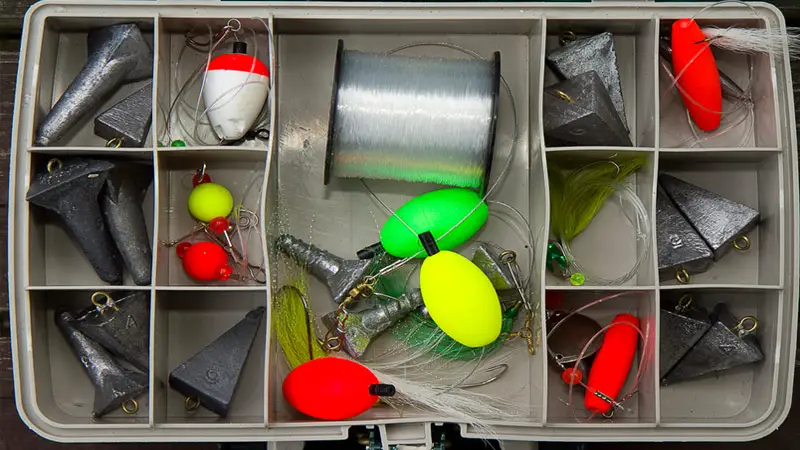
The switch from lead to more environmentally friendly alternatives like steel and tungsten isn’t as straightforward as it might seem due to the economic implications. While the environmental benefits of these alternatives are clear, their cost-effectiveness compared to lead weights raises significant barriers for many anglers.
This economic trade-off between cost and environmental impact is a key factor influencing the adoption of alternative fishing weight materials.
- Material Costs: Tungsten and steel are generally more expensive than lead. The cost of tungsten, particularly, can be prohibitive for many anglers, despite its superior environmental profile.
- Production Costs: The production processes for steel and tungsten weights are more complex than those for lead, contributing to higher retail prices.
- Performance Trade-Offs: Steel is less dense than lead, meaning larger or more weights may be needed, increasing costs. Tungsten, while denser, comes at a premium price.
- Long-Term Environmental Costs: While lead weights are cheaper upfront, the long-term environmental costs—such as wildlife rehabilitation, cleanup efforts, and potential human health impacts—can be substantial.
- Regulation and Remediation Costs: Areas heavily contaminated by lead may require expensive cleanup efforts, and regulations banning or limiting lead weights could impose additional costs on anglers who need to replace their gear.
Possible Future Directions: Innovations in Fishing Weights
As the understanding of the environmental impact of fishing weights grows, so does the exploration of innovative solutions that strike a balance between performance, cost, and environmental sustainability.
Researchers, manufacturers, and even individual anglers are continually experimenting with new materials and designs to minimize the ecological footprint of fishing while maintaining, or even improving, the efficiency of this crucial piece of angling equipment.
One area of innovation is using biodegradable materials, such as certain types of dense ceramics or composite materials, which degrade over time without releasing harmful substances into the environment.
Similarly, designs that facilitate easy retrieval of lost weights, such as those incorporating magnetic properties or visible markers, are also under exploration. Furthermore, advancements in manufacturing technologies could potentially reduce the costs of alternative materials, making them more accessible to a wider range of anglers.
The future of fishing weights will likely be one of continued evolution, driven by the dual forces of environmental responsibility and angling effectiveness.



